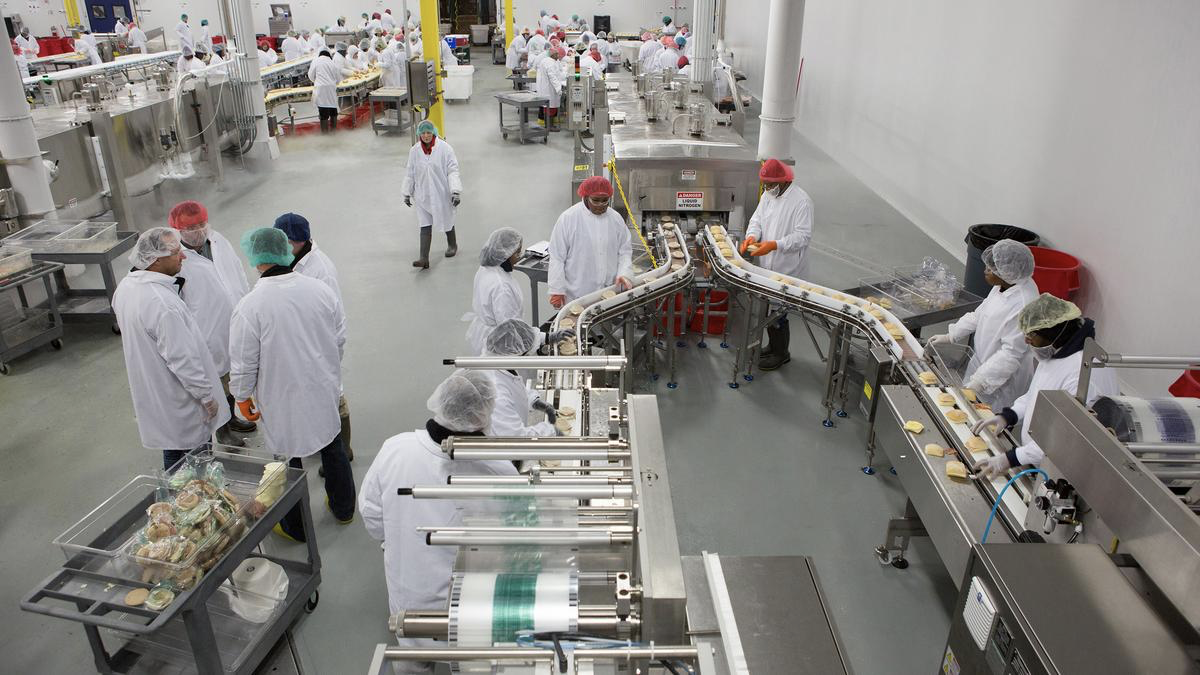Good hygiene design principles are essential to the production and maintenance of pharmaceutical products. The quality, quantity, and sterility of products made at a plant all rely on the idea that each worker is handling their work area with a clean hand. If an individual has been working on an assembly line for eight hours and still has not washed their hands, this will have adverse effects on the product. The same principle applies to contamination of a surface or equipment through bodily fluids. If an individual who has recently vomited or had diarrhea touches the product, residue will most likely be left on the surface.
There are a number of ways to ensure cleanliness in a manufacturing operation. It is important that an individual has constant access to soap and water in addition to the use of hand sanitizers. Workers should also be familiar with the location of no-touch surfaces where germs do not normally grow. A clean area should not only be free of contamination, but also have easy access for housekeeping crews to quickly remove dirt and debris from the surface of a piece of equipment. In terms of machinery, the idea of cleanliness is not limited to the exterior. Every machine that is used to manufacture a product should have its own dedicated air supply. One of the most common examples of manufacturers who use this technology is found in drugs like insulin. Most insulin manufacturing plants utilize a HEPA (high-efficiency particulate arresting) filter that removes any foreign particles from the air before it is released into a room.
Creating Quality Hygienic Design:
The process of preparing a pharmaceutical product can make or break the quality of the finished product. It is important that a group of individuals involved in this process are able to handle this aspect of the operation as effectively as possible. There are several areas in which these individuals can help prevent contamination. First, workers should be familiar with the area where they will be working and how to properly clean their hands. By knowing where sanitation stations are and how they operate, cleanliness may become easier to achieve at all stages of production. The same principle applies to workers who will be handling the product. A worker should know the location of any no-touch surfaces and the importance of keeping these areas free of germs. In some situations, an operator will actually be wearing a gown and gloves while they are working to prevent contamination.
Materials Of Choice:
The components of a system are only as good as the sum of its parts. The design of a system can be broken down into individual pieces that, when combined, will result in a fully functional Nhk Machineryparts. This idea is often applied to machinery that is used to develop pharmaceutical products. Production lines consist of individual pieces of machinery and machines made specifically for the manufacturing process. Pharmaceutical production machinery is built to produce high quality products that are safe for human consumption. A continuous process of testing is used to ensure the effectiveness of the product. The goal of this testing is to be able to determine when a batch leaves a facility in order to meet the targets set by regulatory agencies around the world.
In closed systems, there is an extreme emphasis on cleanliness since the entire process is contained within a single building. A plant that makes pharmaceutical products will usually be located near a residential area or an industrial park. This means that workers and operators in these locations are exposed to a large number of potential bacteria over the course of their work day. The idea that any worker could come into contact with harmful bacteria during the course of their life is unrealistic.
Equipment Selection:
Hygiene in pharmaceutical manufacturing has become a key feature of regulatory standards. The goal is to ensure that the risk of contamination is limited to only those areas that are necessary. Any parts that are not used in the primary process should be covered. The same concept applies to components that are not regularly in contact with human fluids. This is accomplished by limiting the number of components in a system and only including the necessary parts. In smaller systems, every component is an active part of the manufacturing process. This means that there is a higher risk of contamination occurring from human contact or from the environment. In these situations, the design of a machine must focus on keeping contamination to a minimum. Creating optimal conditions for biological growth is not necessary for the device to operate properly. Cleanliness in pharmaceutical manufacturing focuses on reducing risk and preparing machines for possible incidents not preventing them from occurring in the first place.
Final Thoughts:
There are few topics today that generate as much attention in the news, world health and safety organizations, and legislative bodies around the world as cleanliness. When it comes to pharmaceutical manufacturing, it is important that every step of the process is as hygienic as possible. Manufacturers who produce drugs must be able to meet an extremely high standard when it comes to handling their product. The idea of cleanliness in pharmaceutical manufacturing is based on reducing all possible risks of contamination. One way to accomplish this goal is through design.
